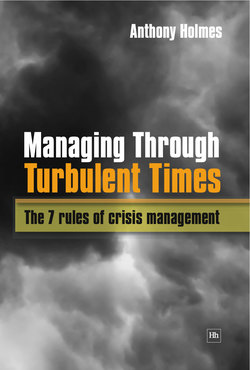Читать книгу Managing Through Turbulent Times - Anthony Holmes - Страница 16
На сайте Литреса книга снята с продажи.
3. Corporate lifespan
ОглавлениеChange is the constant condition of the physical universe. Some things change so slowly that they appear constant but then unexpectedly vary significantly and suddenly. But if there was no capacity for major or unpredictable change there would be no novelty and no progress.
Our economic system is similar and within it the role of management is not to eliminate change but to moderate the pace to a level at which progress, that is incremental constructive change, can be induced as the persistent state.
But the notion of progress implies the replacement of one thing with something new and preferable. Hence the product, process, service or distribution channel that is superseded must either adapt or die.
This constant churning, the dance of progress, follows a pattern that applies to all things.
Sometimes this change is turbulent, occasionally it is the result of unexpected and unpredictable events but it also arises naturally in the transit between the sequence of phases an organisation encounters as it evolves along its lifespan.
The lifespan, sometimes misleadingly called the life cycle, describes the way an organisation grows, matures and declines. The way it lives its life and dies and, in particular, the crises, both natural and unexpected, that it encounters which shape and colour the organisation as it ages just as similar events mould our own lives.
Few organisations, if any, enjoy an incident free or turbulent free lifespan. If they reach the phase of maturity they will encounter at least one economic recession and with it externally induced turbulence. If they do not reach maturity then they will encounter the turbulence of premature decline and collapse.
The corporate lifespan illustrated below provides the basic model along which leadership and management must function as the company encounters, in turn, the need for change or consolidation.
© Anthony Holmes 2004
The natural turbulent turning points are the transitional events that arise when a company moves from its growth phase into maturity and the change from maturity to decline. The change to maturity marks the need for managerial skills to replace the pioneering attributes that have been employed to found and grow the company, and marks the point at which the managerial challenge changes to control what has, through success, become growth in excess of system capacity which, unless it is controlled, will lead to failure.
The movement from maturity into decline may result from the ossifying control imposed by management which has inhibited the organisation’s capacity to adapt rapidly to environmental changes (as per the Woolworths example given earlier). This drift is usually signalled by declining profit, reduced cash flow and increased income gearing.
The psychological mode of management that characterises each phase in the lifespan can be described simply as follows:
| Lifespan Phase | Mode |
| Infancy | Beginning |
| Growth | Becoming |
| Maturity | Being |
| Decline | Reversing |
